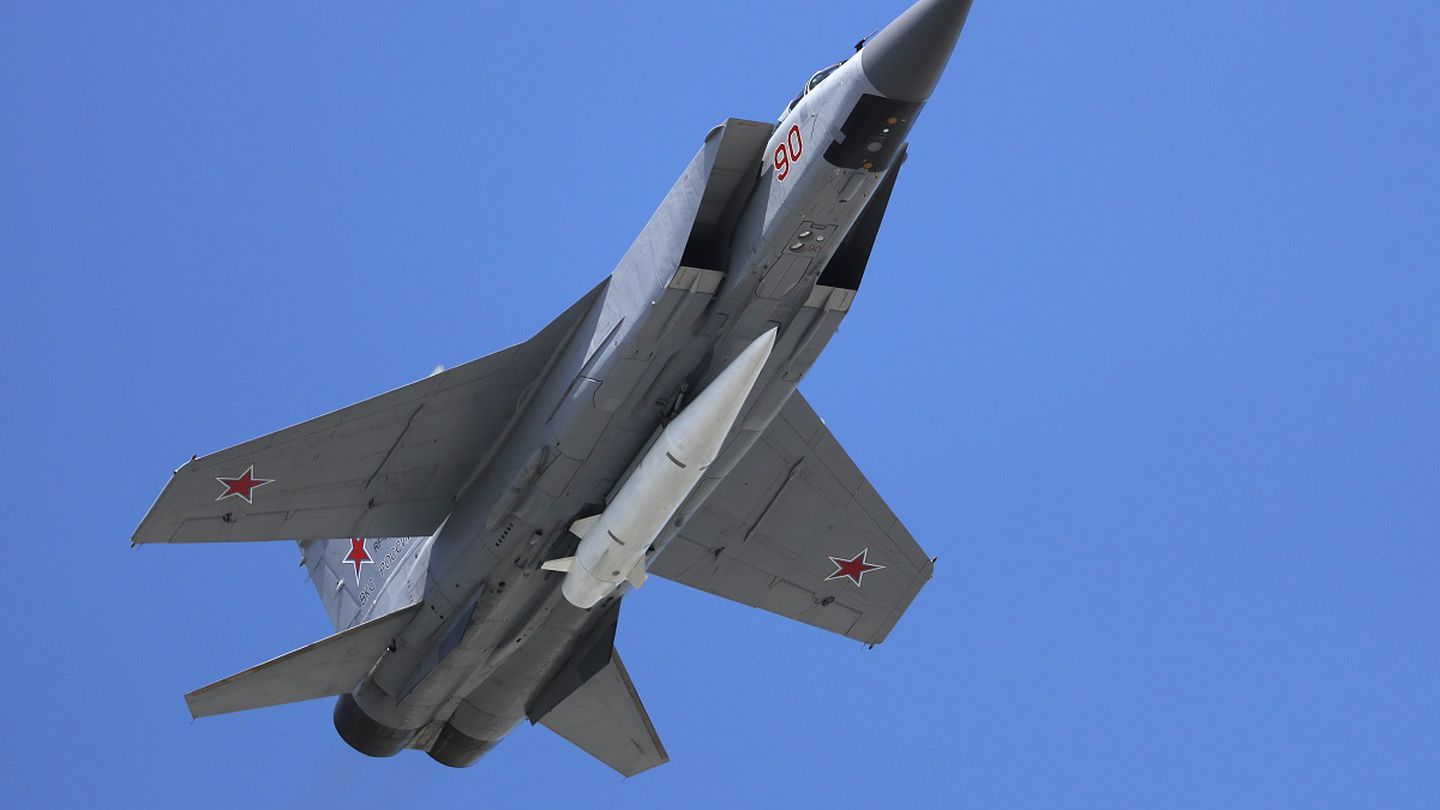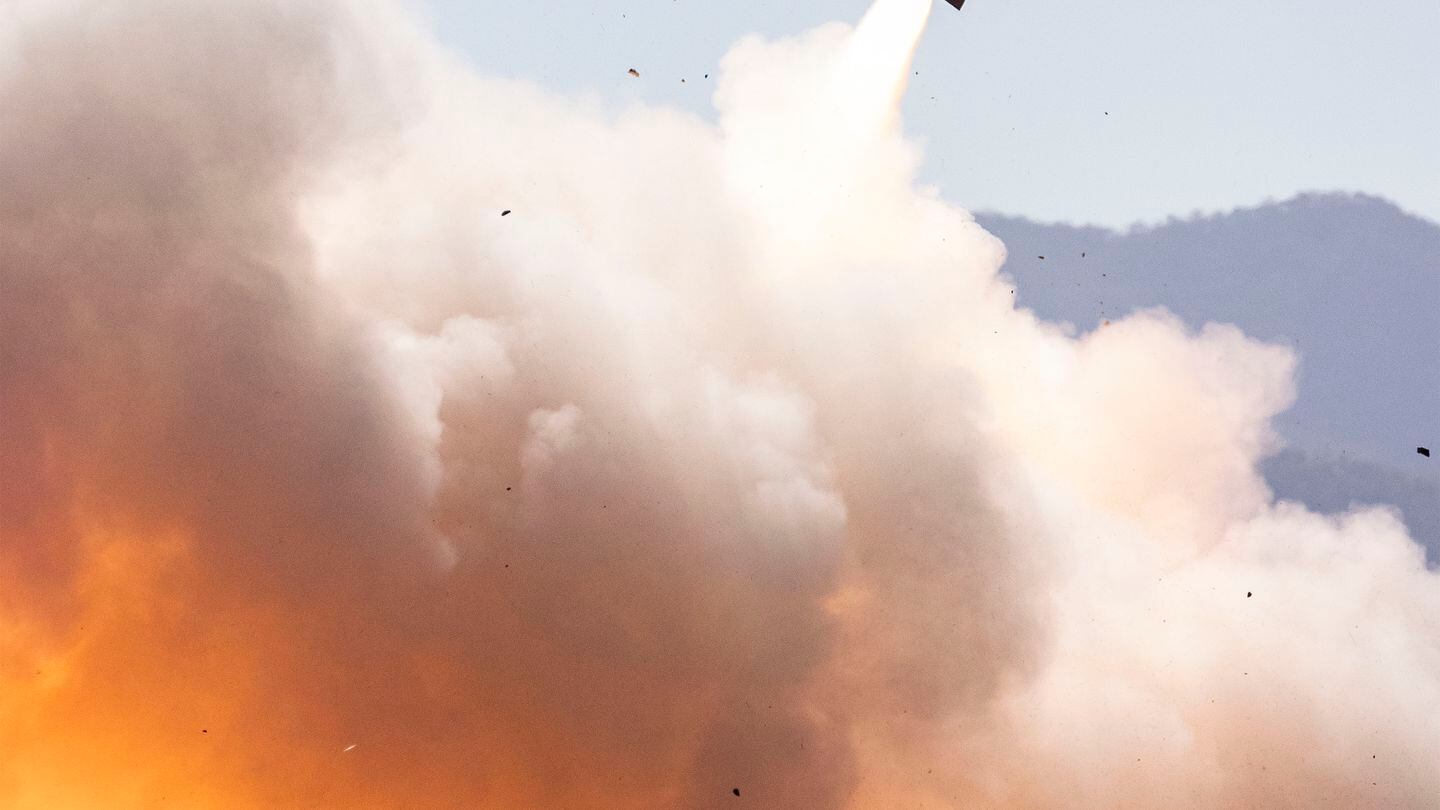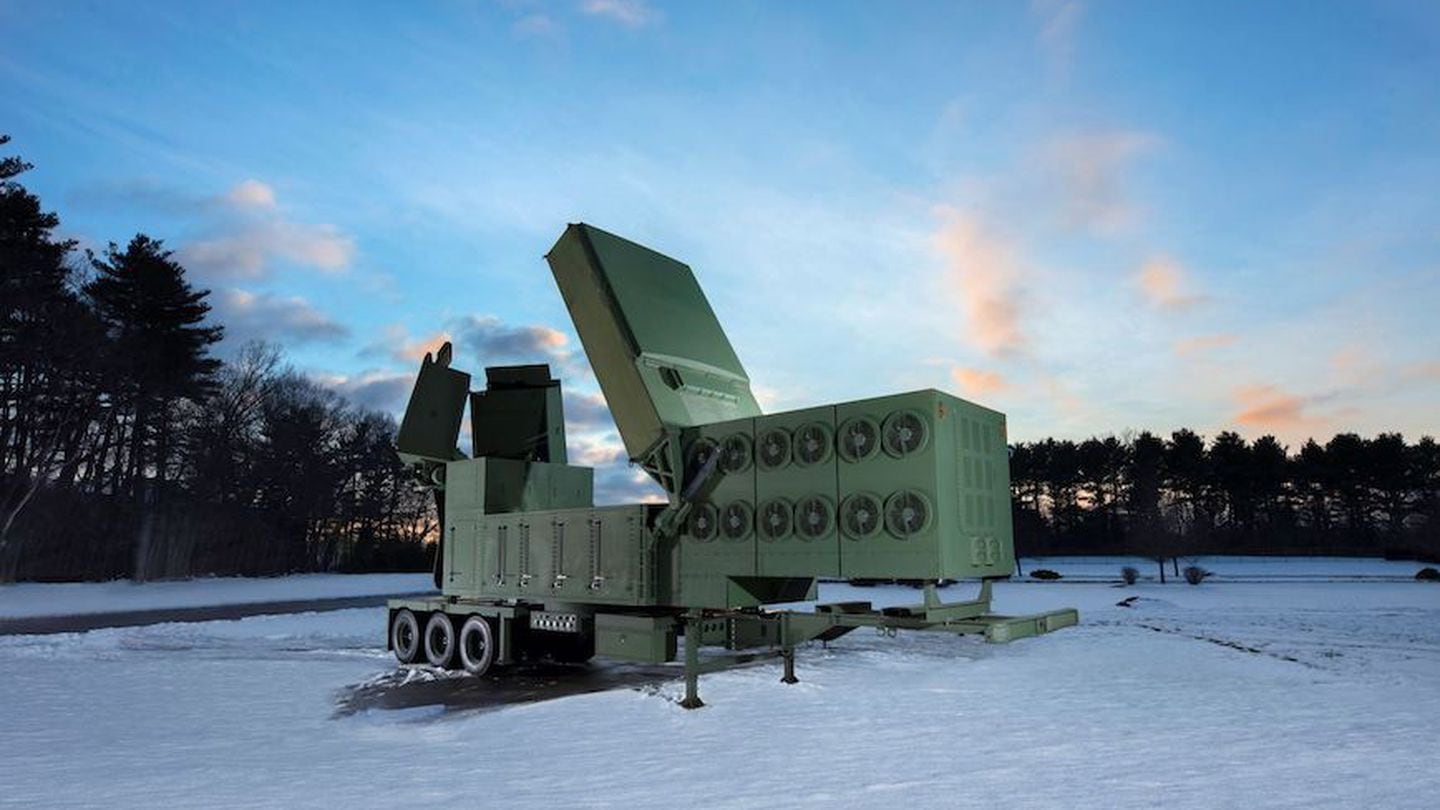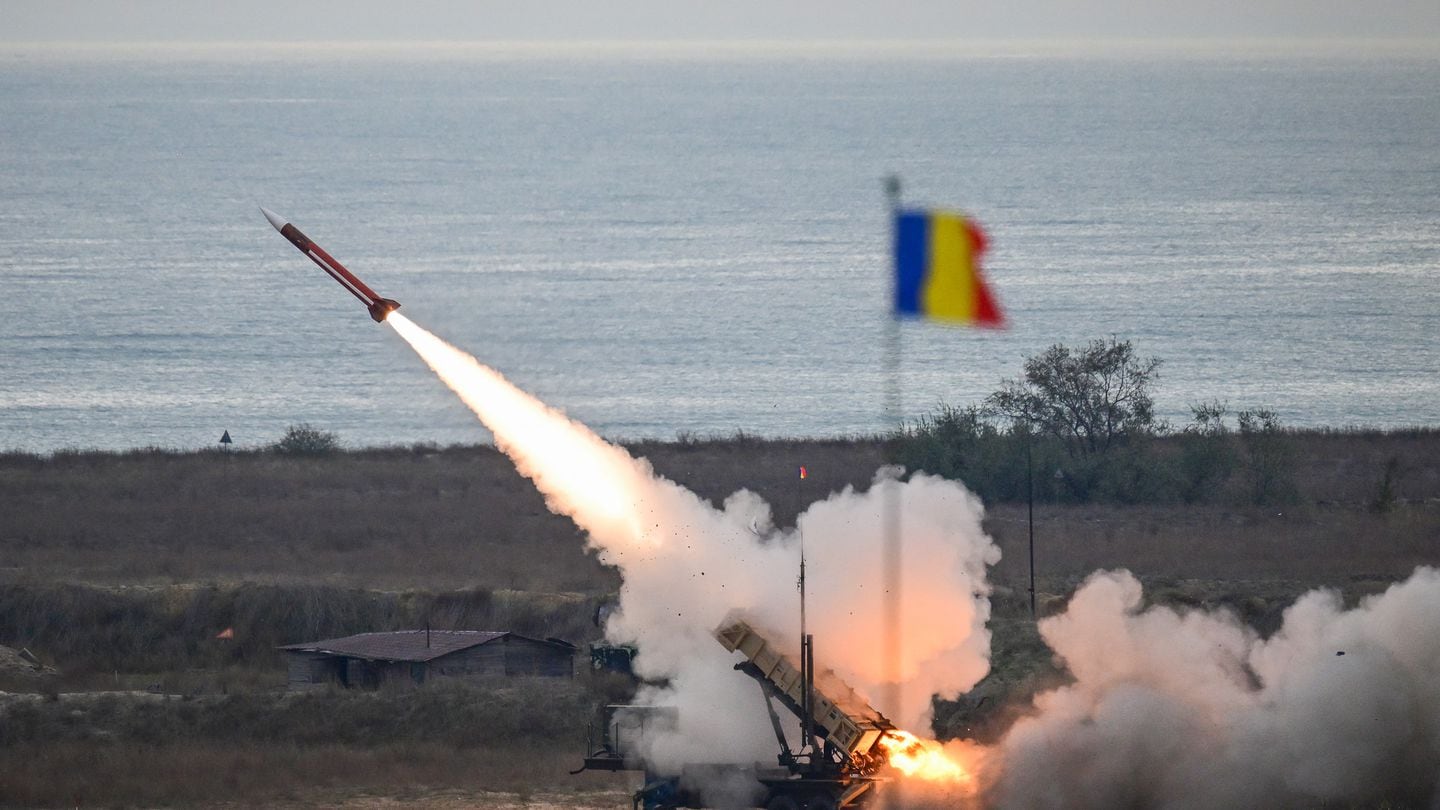In the dead of night in May, Russia launched a Kinzhal hypersonic missile at the Ukrainian capital of Kyiv.
The air-launched weapon can reach speeds up to Mach 10, which equates to about 7,700 mph.
Less than a month earlier, the U.S. had sent a Patriot air defense system to Ukraine to help it fend off the barrage of complex missiles Russia was using. But the system had never proved itself against a missile like the Kinzhal.
Even so, the Patriot system blocked the incoming missile, defusing the weapon and several others, according to U.S. officials.
Since then, the Patriot system has continued to successfully intercept a wide range of Russian weaponry. It has shot down Russian aircraft like Su-34 fighters flying nearly 100 miles away, and intercepted missiles as far as 130 miles away, according to Oleksandr Musiienko, head of the Kyiv-based nongovernmental organization the Center for Military and Legal Studies.

The success of the RTX-made Patriot system in Ukraine comes as the U.S. Army aims to replace the Patriot with an integrated air and missile defense system better able to connect with other equipment on the battlefield and equipped with a more capable radar.
But the Patriot system’s dominance in Ukraine has attracted fresh attention and potential customers from around the world. What might have looked like an aging system not long ago now appears to be a workhorse that could be used for years to come.
“Patriot has prove[d] to be a very reliable system,” said Ben Hodges, a retired three-star general who commanded U.S. Army forces in Europe following Russia’s annexation of Crimea. “The Ukrainians learned very quickly how to operate it, and even more impressively they learned very quickly how to employ it to great effect.”
“Nations are much more alive to the [air and missile defense] threat,” he added.
The successor
The Patriot system was first introduced to counter threats to the United States during the Cold War. But it faced significant battle when forces deployed the system in the Middle East during the Persian Gulf War and the Iraq War.
In those early years, the Patriot experienced major failures. In 1991, for example, the system failed to intercept an Iraqi Al Hussein Scud missile, which hit barracks in Saudi Arabia and killed 28 U.S. soldiers. The system was then involved in three friendly fire incidents in 2003 during the Iraq War; in one case, a Patriot shot down a British Royal Air Force Tornado jet, killing its two crew members.
Despite these failures, the U.S. Army has long relied on the system. Indeed, its Patriot units for years maintained the highest operational tempo across any units in the service with the longest deployments. Despite the incidents in Iraq, it was heavily used there and successfully countered ballistic missile threats.
And plenty of other countries also use the system, which is made up of eight truck-mounted launchers, a ground radar, a control station and a power generator. The launchers can each hold four interceptors.

According to Raytheon, an RTX company that manufactures the Patriot system, 19 countries have purchased the weapon and there are more than 250 Patriot fire units around the world. Tom Laliberty, Raytheon’s president of land and air defense systems, told Defense News in a recent interview the U.S. owns 85-90 of those, with the rest distributed among the other 18 customer countries.
“The system has just been continually improved based on feedback we get from the now 19 countries that use Patriot,” he said.
Russia’s 2014 annexation of Crimea led to a sales burst. Eastern European countries jumped to buy Patriot systems to enhance their own defenses. Romania, Poland and Sweden signed on as new customers in the years between Russia’s annexation of Crimea and the country’s full-scale invasion of Ukraine in 2022.
But during the same time, the U.S. Army started making plans to replace the Patriot, seeking a capability with a more flexible command-and-control system and a radar capable of full coverage. The Patriot radar’s existing configuration creates blind spots for the system.
The Army is slated to build a new Patriot battery to replace the one sent to Ukraine and to secure one more battalion’s worth of systems. But the service will gradually replace individual elements of the Patriot system over the next several decades. Eventually, all of those upgraded elements will become a new system known as Integrated Air and Missile Defense.
The first piece to be replaced will be the Patriot’s command-and-control system, which will be swapped out with the Northrop Grumman-developed Integrated Battle Command System. IBCS, approved for full-rate production last year, will enable the system to connect with a variety of other sensors and shooters on the battlefield.
Next, the Patriot system’s radar is slated to be replaced with the Raytheon-developed Lower Tier Air and Missile Defense Sensor, or LTAMDS. The first set of prototype radars is undergoing tests with the Army; they are expected to offer 360-degree coverage.

In recent months, the sensor completed four successful live-fire demonstrations at White Sands Missile Range, New Mexico.
The Army’s Integrated Air and Missile Defense system will be designed to tie into a broader air defense architecture using IBCS. The service is also expected to be able to easily improve the technology through software updates.
Patriot heats up
But the system’s success in Ukraine has made clear there remains interest for the Patriot in its current state.
Switzerland purchased five batteries and 75 missiles in November 2022, and Romania plans to buy additional fire units. At least two other European countries are close to announcing plans to buy Patriot, according to Laliberty, who declined to identify them.
Germany announced in March it would buy more Patriot systems to augment its air defense capabilities. Raytheon won a $1.2 billion contract that buys radars, launchers, command-and-control stations, spares and support, according to a company statement.
Slovakia has publicly expressed interest in buying Patriot systems following a NATO-owned Patriot system’s deployment to the country in 2022.

Raytheon’s production lines are churning out five fire units for the contract with Switzerland, Laliberty said, and the company anticipates an additional 12 will be under contract within the next 18 months.
“Given that our capacity supports the production of 12 fire units a year, there is sufficient capacity to support current as well as future contracts as they materialize,” he noted.
Raytheon also received a contract in January to replace the U.S. Patriot battery donated to Ukraine. That was paid for with fiscal 2023 supplemental funding approved by Congress.
Now, the company is focused on boosting production of the missiles the Patriot system uses as interceptors. The PAC-3 Missile Segment Enhancement weapons, made by Lockheed Martin, are the most capable missile variant used by the system.
In 2018, Lockheed’s annual rate of building those missiles was 350. The company planned to increase that to 500 annually. But Russia’s full-scale invasion of Ukraine in February 2022 has put new pressure on this effort, and the U.S. Army has provided funding to get Lockheed to 550 missiles per year. In December, the firm said it reached a rate of 500 per year.
The company built an 85,000-square-foot facility equipped with automated systems to build PAC-3 MSE missiles and is now preparing to produce 650 a year by 2027.
Boeing, which supplies the seeker for the PAC-3 MSE, is also planning to accelerate production, according to Jim Bryan, the company’s director of integrated air and missile defense.
Bryan said Boeing last year added 35,000 square feet to its factory, enabling a 30% production increase.
Many of the expansion efforts by Lockheed and its suppliers preceded government funding. The companies are banking on both an increase in U.S. government spending in the coming years as well as a rise in orders from international customers.
“From a demand future, we continue to see it. We meet with customers all the time, and we think we’ll be adding new customers to the MSE line,” Brenda Davidson, Lockheed’s vice president of PAC-3 programs, told Defense News. “The areas of Asia-Pacific and the Middle East continue to be very, very important to us.”
‘Patriot has a place’
Indeed, those two regions have existing Patriot customers that continue to rely on the system. And geopolitical hot spots, such as the Taiwan Strait and the Red Sea, are driving demand for air defense more broadly — regardless of which system is available.
Increasingly savvy ballistic missiles and emerging hypersonic missiles are creating new challenges for air defense systems. The U.S. Army has named air defense one of its highest priorities, and is adjusting its funding accordingly.
In the fiscal 2025 budget released in March, the Army asked for $602 million in research and development efforts for Integrated Air and Missile Defense and $2.8 billion in procurement, which covers modernized capabilities beyond the Patriot system.
For Patriot modifications alone, the Army planned to spend $1.7 billion between FY24 and FY28, according to FY24 budget documents. Now, the Army is requesting an additional $2.29 billion across the same time period to modify and upgrade its Patriot capability, according to FY25 documents.
The head of U.S. Army Space and Missile Defense Command, Lt. Gen. Sean Gainey, said the service has sought to reduce pressure on Patriot air defense units, but has been stymied by today’s demands.

“Prior to the recent increase in deployments, we were continuing to move along a path to regain some of that readiness,” he told Defense News in March. The “demand has limited our ability to regain a lot of that readiness back.”
He said the Army hopes international allies will help as they increasingly buy air defense capabilities.
“It’s going to be a challenge as long as we have the high demand moving forward on our soldiers. But leveraging our partners and leveraging our modernization goals are the ways that we can eventually, sometime in the future, start alleviating some of that pressure,” Gainey added.
Hodges, however, said there remains just one U.S. Patriot battalion committed to Europe.
“I have seen and heard a lot more conversation about” air and missile defense integration among allies and partners in Europe, he noted, “but I have not seen marked increases in capabilities, nor have I seen a large-scale, theaterwide, joint, multinational air [and] missile defense exercise that presents the same sort of challenge a Russian attack would bring.”
“None of us has enough capacity to defend much of what must be protected. So integration and regional approaches are necessary,” Hodges added.
For his part, Gainey said some European countries are interested in adopting the U.S. Army’s modernized capability, including the Lower Tier Air and Missile Defense Sensor as well as the Integrated Battle Command System. Poland, for example, is the first country to field the latter.
“Patriot has a place,” Gainey said. “They will still operate out there hand in hand until we fully modernize the air and missile defense force.”
from Defense News https://ift.tt/0RkEW5a
via IFTTT

Post a Comment